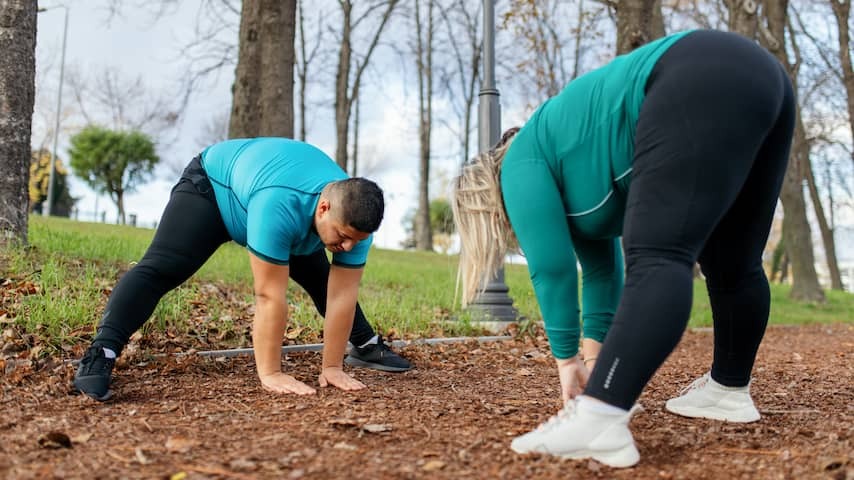
If you’ve recently started exercising, you’ll want to see a reward on the scale or in your clothing size as quickly as possible. How soon can you expect results, and does that fat really need to come off?
Having a lot of fat mass is always unhealthy. Having very little muscle mass is too. That’s why doing some sport is always good, no matter how little, according to sports scientist Bas van Hooren. “If you use your muscles more often, more intensely, they become stronger. They adapt to the degree of your movement, and are broken down if you don’t move at all.”
You need muscle mass, because muscles absorb sugars, or carbohydrates, and use them as an energy source. The more muscle mass you have, the more and the better you burn calories, even when you are not active, according to research. “If you have very little muscle mass, the sugar in your blood remains high for longer after you have eaten – which can lead to inflammation. During exercise, the sugars in the blood are used first. The fat mass is then less addressed.”
A healthy amount of muscle mass therefore protects against overweight. It also protects against diabetes and ensures healthy joints, more strength, a stronger immune system, more energy and a higher bone density.
Your muscles grow after the first workout
If you have a lot of fat mass, and especially abdominal fat, you have a higher risk of cardiovascular disease, type 2 diabetes and high blood pressure. It also ensures that you can move less efficiently. “Life is less easy if you have little muscle mass and a lot of fat mass. It’s harder to run after your children, lift groceries, a sprint to the bus won’t work, you get off the couch less easily.”
Your muscles grow immediately after the first workout, says Van Hooren. “In most studies, you can actually measure that growth after a week or four, with training twice a week. Muscle strength improves after one to two weeks, because your nervous system adapts faster than your muscles grow.”
After two months of running, even if this is ‘only’ two to three times a week, you may already have lost fat mass.
Fat you breathe out
“Something that many people don’t know is that you lose calories through your breathing,” says Van Hooren. “When you burn fats or carbohydrates, carbon dioxide is released. You breathe this out. Every time you exhale, you actually lose a little fat or carbohydrates – we can measure that with exhaled gas analysis masks. A handy mnemonic for if you want to lose fat: if you are out of breath from exercise, you are breathing out calories, and therefore losing them. The faster your breathing, the more calories you roughly burn at that moment.”
Simply breathing fast without exercising does not ensure that you burn a lot of calories. In addition, you don’t always have to exercise very intensively to lose calories. You can also move less intensively, but maintain it for longer.
Losing fat and building muscle: how fast does that go? Van Hooren cites the following study, in which a group of women were followed for a year. These women had passed menopause, had an average BMI of 33 and were therefore overweight, and lived inactive. They also limited their calorie intake by 25 percent. The women walked about 25 minutes a day five days a week for a year. “After that year, they had lost an average of nine kilos. Their effort was moderate, but nine kilos is certainly worth it.”
‘More is always better’
The extent to which you lose fat therefore has to do with the effort you put in. And because we generally move so little, everything you do is included, says Van Hooren. “If you walk for half an hour once a week, it will take an incredibly long time before you lose weight. Remember that more exercise is almost always better. Everyone can progress, but some people simply have to work harder for it.”
Build muscle mass by training with weights, says the sports expert, and also do something that makes you a little out of breath. Don’t make it too difficult and don’t run too fast. Otherwise you won’t be able to keep it up and you’ll be back on the couch in no time. You can also do muscle-strengthening exercises using your own body weight, such as squats or push-ups.
Van Hooren: “By nature we are lazy. We are programmed to use our energy efficiently and will seize everything to avoid moving: you are tired, have read somewhere that it doesn’t really have to. But make it a priority.”